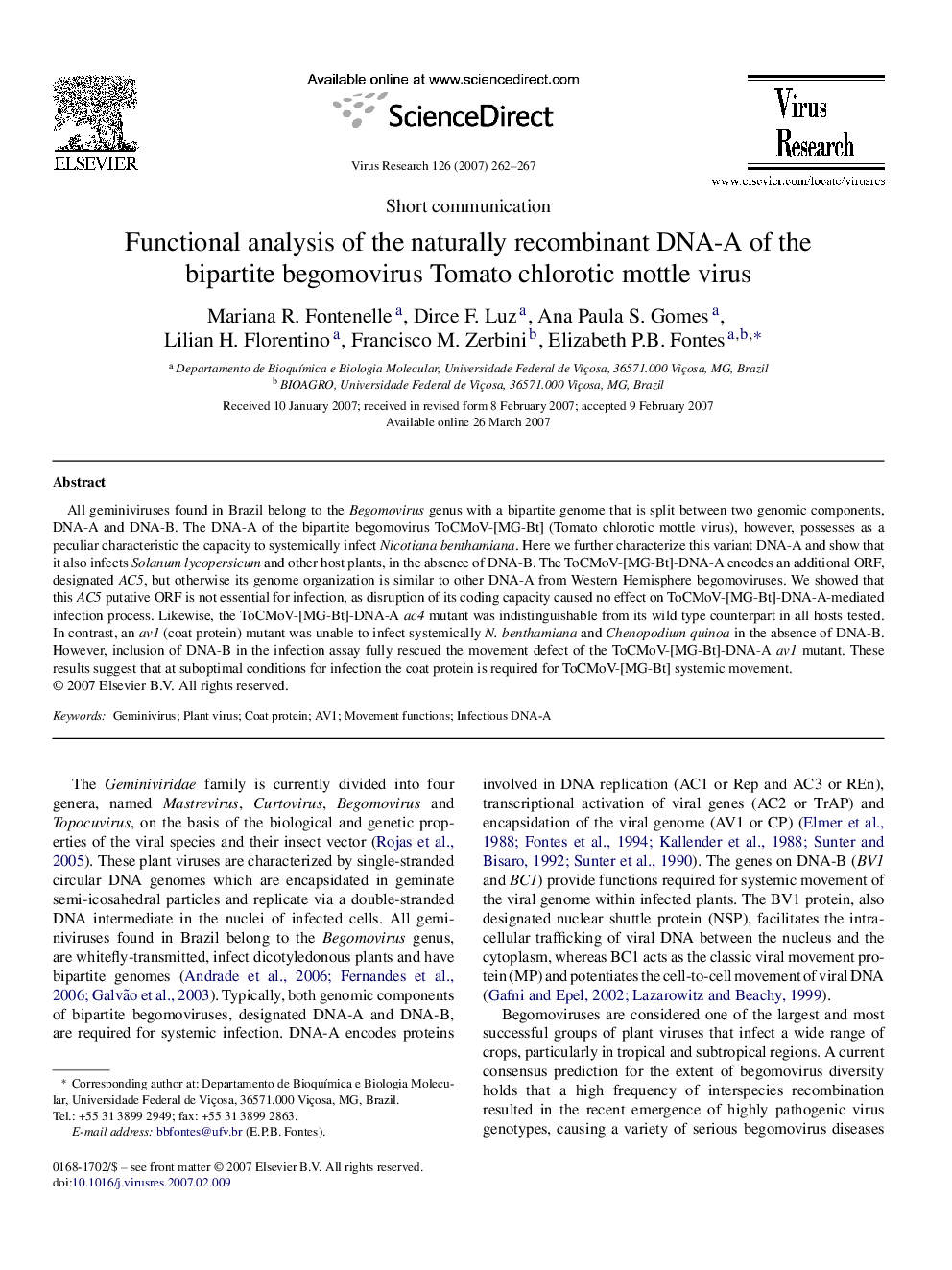| Article ID | Journal | Published Year | Pages | File Type |
|---|---|---|---|---|
| 3430918 | Virus Research | 2007 | 6 Pages |
All geminiviruses found in Brazil belong to the Begomovirus genus with a bipartite genome that is split between two genomic components, DNA-A and DNA-B. The DNA-A of the bipartite begomovirus ToCMoV-[MG-Bt] (Tomato chlorotic mottle virus), however, possesses as a peculiar characteristic the capacity to systemically infect Nicotiana benthamiana. Here we further characterize this variant DNA-A and show that it also infects Solanum lycopersicum and other host plants, in the absence of DNA-B. The ToCMoV-[MG-Bt]-DNA-A encodes an additional ORF, designated AC5, but otherwise its genome organization is similar to other DNA-A from Western Hemisphere begomoviruses. We showed that this AC5 putative ORF is not essential for infection, as disruption of its coding capacity caused no effect on ToCMoV-[MG-Bt]-DNA-A-mediated infection process. Likewise, the ToCMoV-[MG-Bt]-DNA-A ac4 mutant was indistinguishable from its wild type counterpart in all hosts tested. In contrast, an av1 (coat protein) mutant was unable to infect systemically N. benthamiana and Chenopodium quinoa in the absence of DNA-B. However, inclusion of DNA-B in the infection assay fully rescued the movement defect of the ToCMoV-[MG-Bt]-DNA-A av1 mutant. These results suggest that at suboptimal conditions for infection the coat protein is required for ToCMoV-[MG-Bt] systemic movement.
